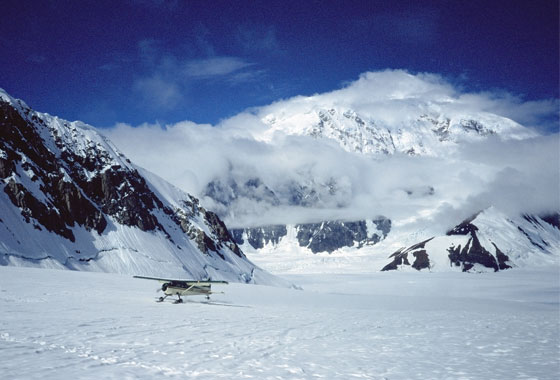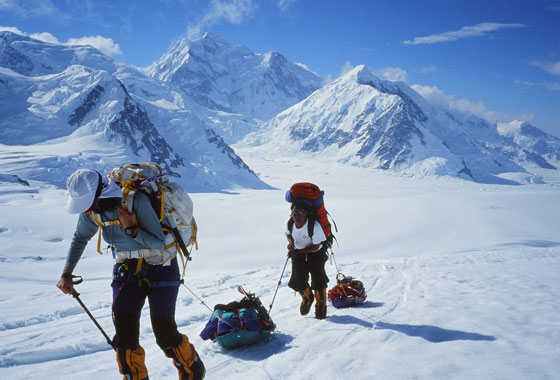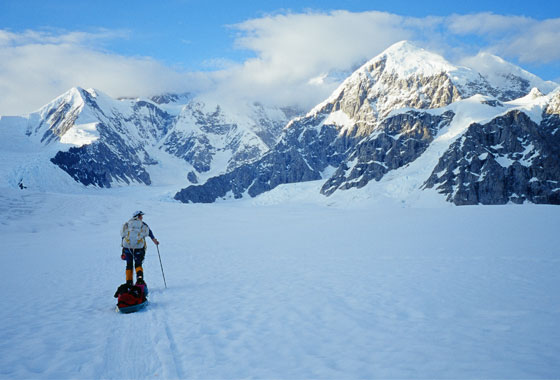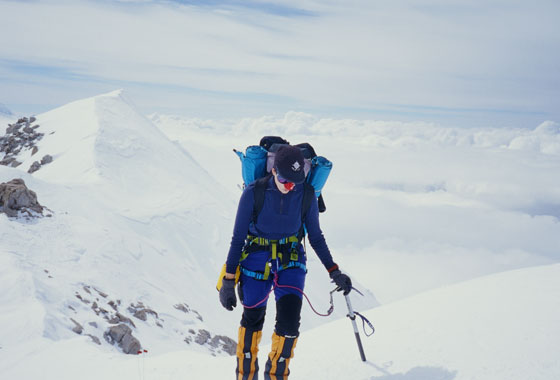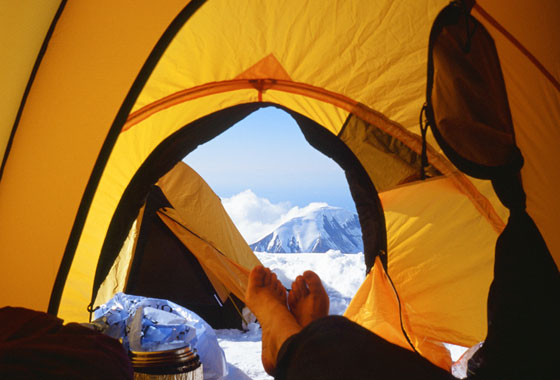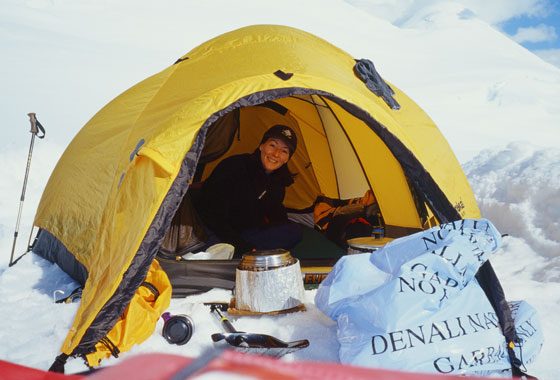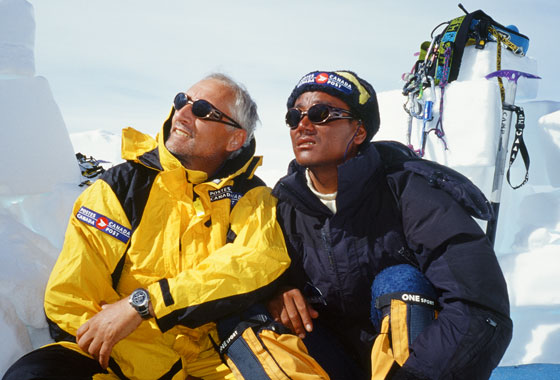Every mountaineer the world over dreams of Mount Denali – McKinley. Perhaps because it is so isolated, or because this enormous mountain has the greatest change in elevation, or because of its legendary storms. But surely because of its magnificence.
Expedition
The team consisted of three climbers: Nathalie Tremblay, Bernard Voyer and Dorjee Sherpa. After reaching the summit of Everest together on May 5, 1999, Dorjee and Bernard promised that they would climb together again sometime, so Dorjee was invited to experience his first climb outside the Himalayas (he who has already stood on the roof of the world no fewer than six times). He was impressed by the beauty of Denali Park and by the challenge of Mount McKinley. It was a very experienced team. The last steps up to the summit were along a dizzyingly high ridge of snow.
On July 2, at 12:50 p.m. local time, Nathalie, Bernard and Dorjee reached the 6,194-metre summit. It was a great triumph. The difference in barometric pressure, because of the northern latitude, makes it feel like 6,900m. In any case, the summit offers an exceptional view of the whole mountain range, and of course the “high” of success.
For Bernard, this was the sixth summit in his campaign to climb the highest mountain of every continent.
Denali is the Native name for Mount McKinley, meaning “the highest.” At 6,194 metres, it is the highest peak in North America. It is located in Alaska, 200 km north of Anchorage, part of the Alaska mountain range, and is protected by strict rules governing U.S. national parks. It attracts hundreds of climbers every year.
Mount Denali – McKinley offers a true challenge. It has the greatest change in elevation between the base camp and summit, with the base camp at 2,000m and the summit at 6,194m, for a difference of 4,194 metres. Climbers reach the mountain by ski plane, landing on a gentle slope with few crevasses. This spot is considered the base camp, although climbers don’t stay here long.
This high mountain is considered one of the world’s hardest, and with good reason. There are many obstacles to overcome, including the task of transporting all the equipment you need over a long distance. You have to be entirely self-sufficient, transporting heavy loads on a sled: a few weeks of food, and high-mountain equipment, all pulled for days over steep, crevasse-filled glaciers. Up to 3,350m, you have to use snowshoes or cross-country skis.
Beyond that point, crampons are essential to pull the load up to 4,350m, because the glacier is so steep. The rest of the route involves real climbing, with a backpack, ice axe, crampons and ropes, and halts to acclimatize to the altitude.
Some walls are very steep and have to be climbed using fixed ropes. There are also a few rocky ridges to be overcome. A “mixed” climb means that you have to deal with both rock and ice, calling for careful attention and great precision in your movements. Mount Denali – McKinley is also reputed for its particularly capricious weather conditions, thanks to the low-pressure systems generated in the Gulf of Alaska.
This high mountain lies very far north (63 degrees North latitude), near the Arctic circle, so winter here is the real thing! It once received over 3 metres of snow in just a few hours. On the other hand, the polar latitude offers a valuable advantage: 24 hours of light in the summer, so you can climb both night and day.
Facts and figures
- Summit date: July 2, 2001
- Elevation: 6 194m
- 3 alpinists : Bernard Voyer, Nathalie Tremblay, Dorjee Sherpa

